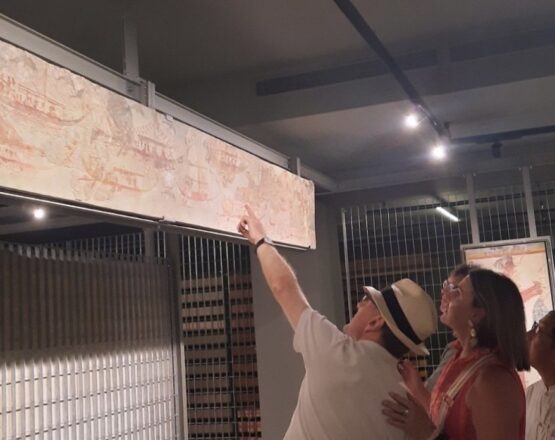Our need for beauty for art
It is probably of biological origin that we humans have a need for beauty.
Is our aesthetic need for beauty “innate”, what biological structures is it rooted in, and how has it evolved over the long history of our species? We have both a biological and a personal need for beauty and aesthetics, it is the product of the co-evolution of the biological and at the same time the cultural history of the human species.
Indeed, thanks to technical methods of imaging brain tissue and function – such as functional magnetic resonance imaging or fMRI, PET scans or PET scans and magnetoencephalography or MEG – we are beginning to identify both the basic brain structures involved and the neural microcircuits that become active when we hear or tell a ‘real’ or contrived ‘fictional’ story.
Indeed, our brain is a narrative machine that works non-stop, creating verbal and virtual narratives even while we sleep and dream. For what are dreams but stories that spontaneously emerge and that we “see” in our sleep? Nocturnal mental narratives produced against our will, when our brain subconsciously processes and combines in particularly imaginative ways the mnemonic recordings of our pleasant or traumatic experiences.
Our brain never sleeps universally and uniformly, but different structures of a seemingly deeply asleep brain wake up and are more or less active during sleep. In all phases of sleep.
We need beauty and art as a species and we are not the only ones who make artifacts – art -. Maybe it’s time to consider that it’s inherent in us!
The exposure and contact with the beauty of art as a species has prompted us to develop both mentally, neurologically, cerebrally as a species and aesthetically the need for aesthetics.
Our every aesthetic experience, whether it is the creation or the reception of a work of art, takes place primarily in our brain, the basic structures and cognitive functions of which have emerged during the evolutionary history of the human species.
Art and aesthetics has influenced human psychology and evolutionary psychology about the microstructure and function of our brain that ultimately creates and enjoys every form of art.
As for the particular artistic abilities of our species, these definitively prevailed some 30 or 60 thousand years ago and are linked to four basic cognitive adaptations of Homo sapiens: 1) physical intelligence to more clearly recognize external physical signs, 2) technical intelligence to produce tools, 3) symbolic intelligence to assign meanings to things, and finally, 4) communicative intelligence, that is, the improvement of the mutual communication ability between humans.
In particular, the new cognitive abilities of human storytellers have put the above-mentioned special cognitive characteristics of our species into communication with each other, leading to the emergence of our more flexible yet more fluid cognitive and artistic behavior.
This is far from a linear evolutionary scenario for the co-evolution of brain and cognitive abilities that culture and art are the products not only of our particular biological evolution but also of historical interaction among early humans.
We are literally addicted to the narrative practices that we create incessantly, not so much by conscious choice as by biological necessity; the mind never stops listening, seeing, arranging, filing and producing stories and images even when we sleep; but parts of the brain activate the left and right hemispheres as when we see , listen to or interact with a work of art that touches our soul in ways that are highly experienced felt.
Ever since, the biological evolution and the cultural history of our species has been inextricably linked and have together shaped the way of being and the lives of all humans.
Art and aesthetics are visible in us, perhaps as necessary as our cognitive function.
Together we have moved, we have emotionally been moved,we have shared, we have recounted, we have sung, we have made temples magnificent and the highest of human arts ancient Greek tragedy.


